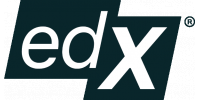- From www.edx.org
Macroeconometric Forecasting

- Self-paced
- Free Access
- Fee-based Certificate
- 10 Sequences
- Intermediate Level
Course details
Syllabus
Module 1: EViews Basics (Optional)
Review of the main EViews commands to manage data.
Module 2: Introduction to Forecasting with EViews
Introduction to the EViews model simulator to estimate and forecast multiple equation models.
Module 3: Statistical Properties of Times Series Data
The concept of stationarity is defined as well as how to test for it. Box-Jenkins (ARMA) methodology to study time series is introduced.
Module 4: Forecast Uncertainty and Model Evaluation
How best to choose between forecasts from competing models or sources. Participants will learn the main forecast evaluation statistics and how to calculate them in EViews.
Module 5: Vector Auto-Regressions (VARs)
Understand VARs, how they used for forecasting and structural analysis, and how to estimate a well-specified VAR and generate forecasts.
Module 6: Cointegration and Vector Error Correction Models (VECMs)
Define and understand the concept of cointegration among unit-root variables and its implications for forecasting. Learn how to test for cointegration using the Johansen method and how to estimate and forecast using a VECM.
Module 7: Evaluating Regressions Models
What does it mean to have a “good model” (model evaluation and key model assumptions) and the consequences for forecasting. Introduction to model testing and dealing with error irregularities and structural breaks.
Module 8: Final Assignment: Bringing It All Together
An overview of the techniques studied is provided using a case study focused on private saving-consumption behavior in the U.S. before and after the global financial crisis.
Prerequisite
A background in statistics and economics at the undergraduate level is assumed.
Instructors
Adolfo Barajas
Senior Economist in the Institute for Capacity Development
The International Monetary Fund
Adina Popescu
Economista del Departamento de Estrategia, Políticas y Revisión
Fondo Monetario Internacional
Sam Ouliaris
Reda Cherif
Senior Economist
The International Monetary Fund
Jorge Restrepo
Dmitry Plotnikov
Mikhail Pranovich
Economist
The International Monetary Fund
Editor

Platform
EdX est une plateforme d'apprentissage en ligne (dite FLOT ou MOOC). Elle héberge et met gratuitement à disposition des cours en ligne de niveau universitaire à travers le monde entier. Elle mène également des recherches sur l'apprentissage en ligne et la façon dont les utilisateurs utilisent celle-ci. Elle est à but non lucratif et la plateforme utilise un logiciel open source.
EdX a été fondée par le Massachusetts Institute of Technology et par l'université Harvard en mai 2012. En 2014, environ 50 écoles, associations et organisations internationales offrent ou projettent d'offrir des cours sur EdX. En juillet 2014, elle avait plus de 2,5 millions d'utilisateurs suivant plus de 200 cours en ligne.
Les deux universités américaines qui financent la plateforme ont investi 60 millions USD dans son développement. La plateforme France Université Numérique utilise la technologie openedX, supportée par Google.

